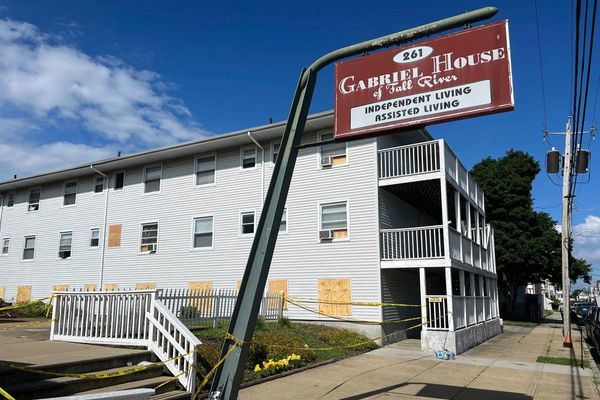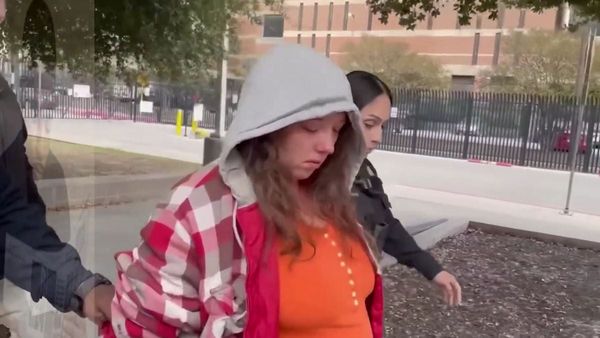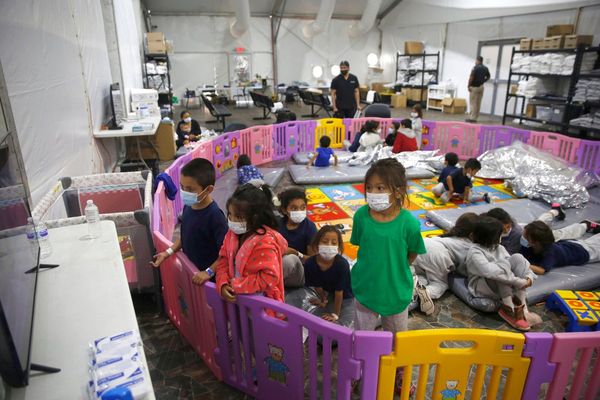Cheryl Miller did something last summer that she had never done before: She bought USC women’s basketball season tickets.
Miller, of course, is the best player in the history of the program, if not the history of the game. She led the Trojans to glory in the 1980s and served as head coach in the ’90s. Yet she couldn’t remember when she’d last caught a USC game before this season. It had been at least 10 years, she figured, maybe 15. She hadn’t bothered even for the crosstown rivalry games with UCLA. The program no longer engaged much with its alumnae, Miller says. But they hadn’t missed too much.
The Trojans had one of the most storied histories in the game; USC was among the first schools to give Division I basketball scholarships to women in the 1970s and won two of the first three NCAA women’s championships with Miller in the ’80s. The biggest stars in the sport had been the Women of Troy. Yet that legacy had more recently given way to an extended, desultory period of frustration. Forget contending for championships. It had been more than a decade and a half without so much as an NCAA tournament win for the Trojans.
But that environment began to shift over the last few years. When USC hired former Cal head coach Lindsay Gottlieb to lead the program in 2021, she extended an open invitation to former players, welcoming them back to campus. Come to practice any time. Talk to the team. Help connect them to program history. Miller was happy to do that. As this season drew nearer, however, she realized that she wanted more. Miller was going to come back to Trojans games, she decided. Not just occasionally, but as often as possible, as close as she could get. For the first time in her life, Miller bought USC season tickets, picking out four courtside seats, and she prepared to bear witness. She needed to be front and center for this.
Miller wanted to watch JuJu Watkins.
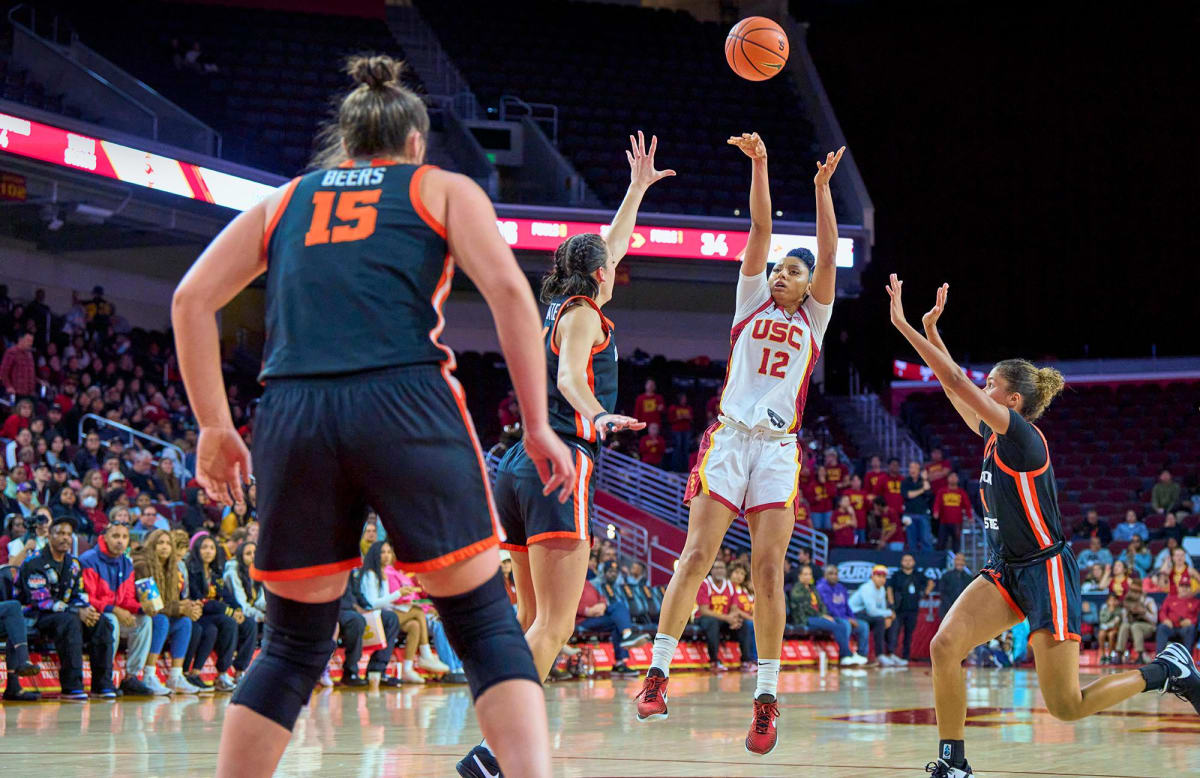
Erick W. Rasco/Sports Illustrated
The 6' 2" freshman guard had been the top recruit in the country, boasting a rare combination of skill, size and speed. Judea Watkins had been recruited by all the best college programs in the country. But she turned her focus elsewhere. The Los Angeles native decided she did not want to join a perennial contender. Instead, she wanted to restore a legacy in her hometown. Watkins became the first Gatorade National Girls Basketball Player of the Year to choose USC since Lisa Leslie in 1990. And Watkins began delivering on the hype immediately.
Watkins scored 32 points in her college debut. (That it was a statement win over No. 7 Ohio State made it all the better.) This kind of performance from her soon felt routine. USC’s record for 30-point games in a freshman season had been three. Watkins passed that … in November. That included a Thanksgiving tournament in the Bahamas, where late in the fourth quarter, the Trojans found themselves down by six against Penn State. No problem: Watkins quickly engineered a seven-point run. In a minute and a half, she had a pair of layups, two rebounds and a transition three that felt “straight out of the NBA,” Gottlieb says. The game, which was held in a tiny gym, was not televised, and the contrast between context and performance felt staggering. Watkins had simply bent the score to her will. It was just the fifth game of her college career. This was part of the program’s best start in a generation. After being largely absent from the rankings for years, USC climbed back into the top 20, and then into the top 10. By the end of December, the Trojans had reached No. 5, their highest mark since Miller had been on the sideline coaching Leslie.
Watkins had done in a few weeks something no one else had been able to do in her lifetime. She’d returned USC women’s basketball to national relevance. Her teammates call it “The JuJu Effect”: sold-out gyms, autograph seekers and picture takers, an entirely different environment from just a year ago. It seemed as if there had been no hesitation, no recalibration, no adjustment period at all, really. There was only Before JuJu and After.
Miller was taking it all in from her courtside seats. Beyond her historic playing career, she coached in both college and the WNBA, in addition to spending years as a broadcast analyst. What comparison does she have for a freshman who’s this dominant a two-way player so early in her career? Miller takes a moment, running through a mental catalog of luminaries, and finds just one. Another daughter of California who drew astonished crowds at USC.
“There’s one other person who really stands out,” Miller says, finally, “and that would be me.”
Ted Watkins Memorial Park lies seven miles from USC’s campus. In the South Central L.A. neighborhood of Watts, it has a playground and a soccer field, picnic tables and walking paths, a swimming pool and a gym with a basketball court. This is home for Watkins.
That’s true in a literal sense; she grew up about five minutes away, playing on that court “all the time,” friendly enough with the man who ran the gym that he would open it just for her. But it’s home in a more personal, essential way, too. Her family has been here for generations. The park is named for her great-grandfather. A civil rights activist, Ted Watkins founded the Watts Labor Community Action Committee, which aims to ease poverty and improve quality of life in the neighborhood. He spent decades working to provide affordable housing, jobs and health care in an area where those were often scarce. Ted died before JuJu was born. But his legacy has always felt very near to her.
There is his nonprofit, still a presence in Watts and now run by her grandfather, Tim. She’d see Ted’s name—her name—every time she went to shoot hoops. In 2020, when a 15-year-old Watkins was named SI Kids’ SportsKid of the Year, this was her chosen location for the photo shoot. Ted Watkins’s motto was, “Don’t move. … Improve.” The park is a testament to that, a place intended to make the neighborhood more beautiful, more clearly a community.
That principle resonated with his great-granddaughter.
It was much bigger than basketball. But it framed her college choice in a way that felt right to her.
“If I stayed home,” Watkins says, “I’d have the chance to build something bigger that meant more than if I went anywhere else.”
Don’t move. Improve.
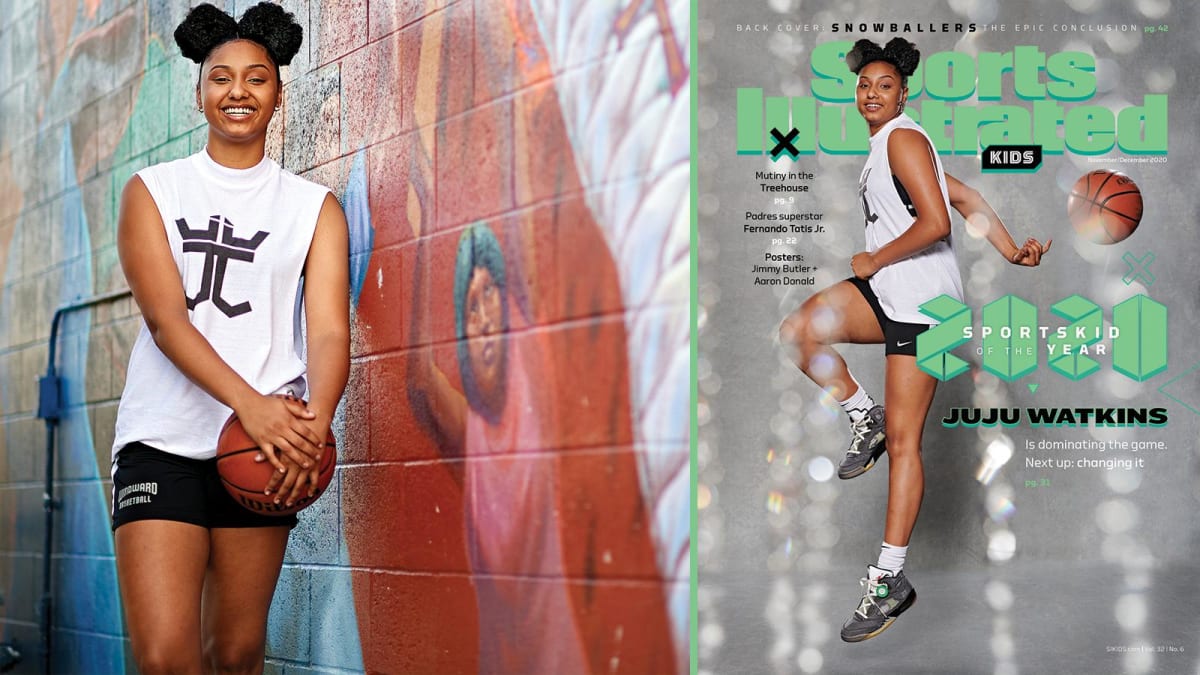
Kohjiro Kinno/Sports Illustrated
Gottlieb picked up on this attitude in her earliest conversations with Watkins. There are some players whose motivations can seem inscrutable, even to themselves, an impossible tangle of desire and impulse. Watkins was the opposite. Gottlieb could identify her driving force right away.
“One hundred percent, it was her connection to family and community,” Gottlieb says. “That was really evident. But at the same time, I knew I couldn’t just assume that it meant, Oh, she’ll stay home. I had to build that trust with her.”
There was no shortcut for that. Gottlieb, who came to the Trojans after two years as an assistant with the Cleveland Cavaliers, had only just begun laying the groundwork for what she wanted to accomplish at USC. She’d brought in some transfers, and she’d started connecting with alumnae, trying to make the history of the program feel more present. But this was then still a losing team. Gottlieb could not show Watkins exactly where she would fit on the roster or how that would look. She could not invite her to a game and be confident that she would see a packed gym. All that Gottlieb could do was describe her vision and hope that Watkins might want to build it with her.
“This is where I credit her so much for the courage,” Gottlieb says. “She had to believe in something she wasn’t seeing.”
Watkins bought in. She liked Gottlieb; she found that she trusted her implicitly. When she made her official campus visit, she felt immediately at home in a way she had not expected, fully able to imagine a future there. She enjoyed meeting with the university president as much as she enjoyed meeting with the equipment manager. Watkins especially liked the answers she got from Gottlieb on specific basketball questions. (A free-flowing offense was key for her: “I knew she had to be coached in a way that allowed her to be the artist she is,” Gottlieb says.) It was unorthodox for a No. 1 recruit to choose a school that had not made the Sweet 16 in almost three decades. But this was it for Watkins. She made the boldest choice available to her: Watkins decided to stay home. She wanted to build something.
“She did something that most people wouldn’t do. … It shows her maturity and how confident and poised she is,” says USC graduate student and team captain India Otto. “I think that decision validates what she’s about and who she is.”
Gottlieb had logged so many hours recruiting Watkins that she didn’t believe anything could surprise her by the end of the process. (“I don’t think anyone saw her play more in high school than me,” she laughs. “I went every time it was legal to go.”) Gottlieb felt very familiar with both Watkins’s depth of character and her talent on the court. She knew she was recruiting a thoughtful player with a modern, do-it-all skill set. Yet the coach still found herself awestruck when the teenager called to say her choice was USC. Gottlieb realized Watkins might be even more exceptional than she’d thought.
“It illustrates that she’s one of those special ones,” Gottlieb says. “There’s this belief—a belief in herself and a belief in what hasn’t happened yet—and I think you have to be wired differently for that. … That decision-making process gave us some insight.”
Teammates and coaches rave about Watkins’s jump shot and her work ethic and her ability to adjust in real time. But they especially marvel at her sense of control. This is meant both mentally and physically: Watkins is always calm on the court, appropriately intense without being excitable, and she operates with a tremendous economy of motion. Her body control is phenomenal. No one draws a foul like Watkins: “Just that ability to shift in the air, to draw contact, to finish through,” Gottlieb says. “It makes her unique.” There are no accidents in her game. To watch her is to see a player who makes everything seem deliberate.
It’s hard to imagine that Watkins could have developed any other way. She was first labeled a potential generational talent as a preteen. That opened incredible doors, but it created intense pressure, too. Watkins attended top private schools. She played first at Windward, where she was coached by former WNBA player Vanessa Nygaard, and then at Sierra Canyon, where she was in the same class as Bronny James. As a teen, she began training with Los Angeles Lakers assistant coach Phil Handy, and she was soon in workouts alongside pro players. She signed with Nike before she committed to a college. (Watkins was the first high school girls basketball player Nike signed to a name, image and likeness deal; the brand filmed a commercial featuring her playing pickup in her prom dress.) But her family was conscious of allowing her to experience these opportunities without letting them swallow her life.
“They’ve been very intentional about both allowing her to be a kid and treating her a little differently in terms of her ability,” Gottlieb says. “They’ve been very smart about understanding her value and what her brand is and what’s important to her. I think there’s been a lot of forethought and vision to first and foremost allow her to impact her community and be a happy human.”
Watkins’s world has grown much bigger. But she has kept her circle deliberately small.
“All of my decisions kind of reflect the person I am and what I’m striving to achieve,” Watkins says. “It’s just making sure that the right intent is always there.”
The program’s flashiest player in decades is remarkably low-key. “She always thinks big-picture,” Otto says. “She just leads her life with such humility. For all the attention and accolades she has, you won’t find many people who are as humble.” And she’s now exactly where she wants to be. A top candidate for National Freshman of the Year, she has scored more in women’s college basketball this year than anyone not named Caitlin Clark, and even with her historically hot debut, she has found ways to keep improving. Watkins is a threat from anywhere on the floor, able to score from three, at midrange and in the paint; she’s both a facilitator on offense and a nightmare on defense. (In addition to leading USC in scoring, Watkins is the team leader in assists and steals per game.) Her most dazzling game of the year came in early February. On the road at Stanford, then ranked No. 4, she engineered an upset victory seemingly by sheer force of will. Watkins scored 51 points—the most in women’s college basketball this year and a record for USC.
“She really does make people around her better,” Otto says. “Her energy and presence and spirit are just so special.”
For a player like Otto, in her fifth year at USC, the change feels almost unbelievable. That the Trojans are winning this much is difference enough. But the way that people are responding—attendance has tripled year over year—is astounding. They’ve grown accustomed to throngs of fans waiting for the team bus. “That’s the kind of stuff I saw when I was in the NBA,” says Gottlieb. She thinks back to how she described these crowds as hypotheticals for Watkins during recruiting.
“There weren’t 10,000 people in the gym then,” Gottlieb says. “There weren’t people lined up around the block. … I couldn’t look at our games and say, This is going to be your crowd. I had to really try to tell her that her gravity would make Southern California come.”
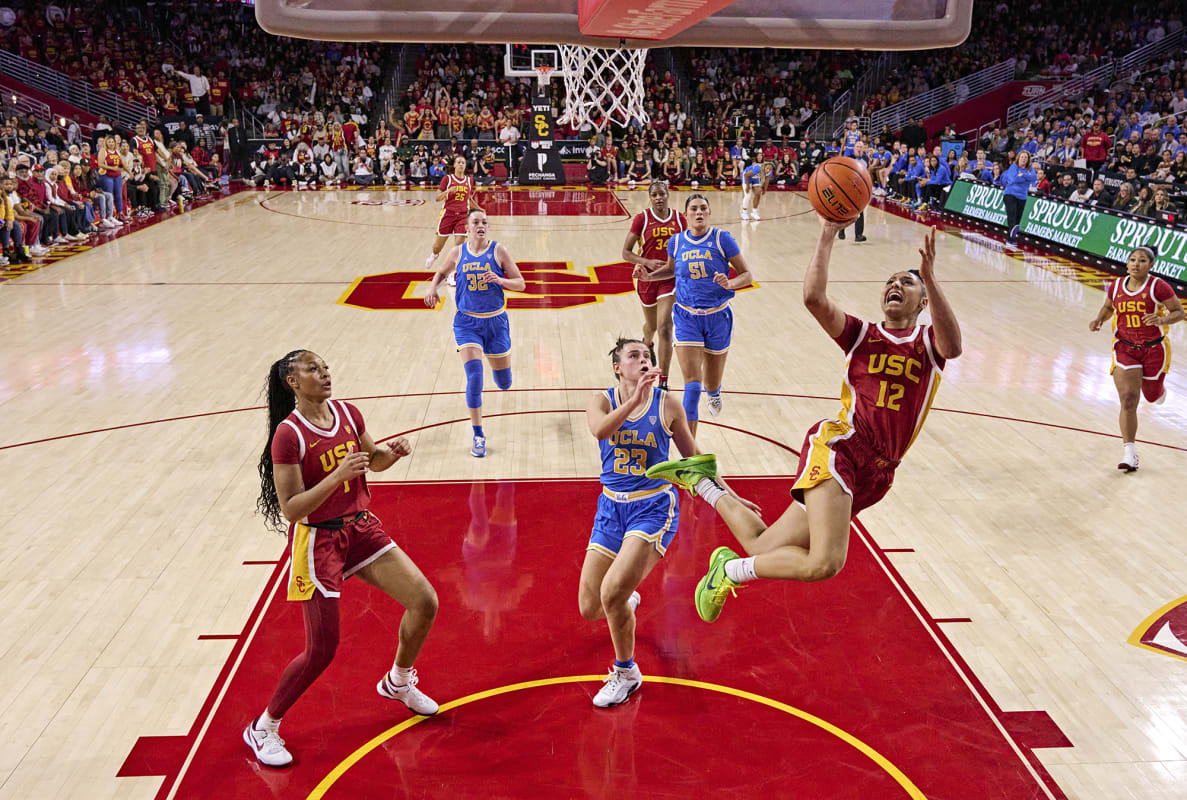
John W. McDonough/Sports Illustrated
It has. USC has played host to a slew of celebrities this season. Every game features a gaggle of Watkins’s friends and family, including her parents, Robert and Sari, and her three siblings. And, of course, Miller, sitting courtside, watching a player who is both very much like her and unlike anyone else in the world.
Every outing has provided one thrill or another. But the game that stands out the most is the biggest one to date. A USC matchup with UCLA always means something. This one meant the most in decades. UCLA gave USC its first loss of the season on the road in December. So in the rematch at home a couple of weeks later, USC had not just rivalry on the mind, but also revenge.
The Galen Center was packed. “You had all of us old-timers in the stands, courtside, the atmosphere was crazy,” Miller says. “It’s a culture change.” UCLA entered the building undefeated. It didn’t leave that way: USC 73, UCLA 65. “It was showtime, and the ladies, they showed out,” Miller says. No one showed out like Watkins. She scored 32—including a perfect 16-of-16 at the free throw line—with 10 rebounds. When the buzzer sounded, Watkins collapsed, grinning, felled by leg cramps but triumphant as teammates swarmed.
It was exactly what Watkins came to USC to do. It’s what Miller bought tickets to watch.

